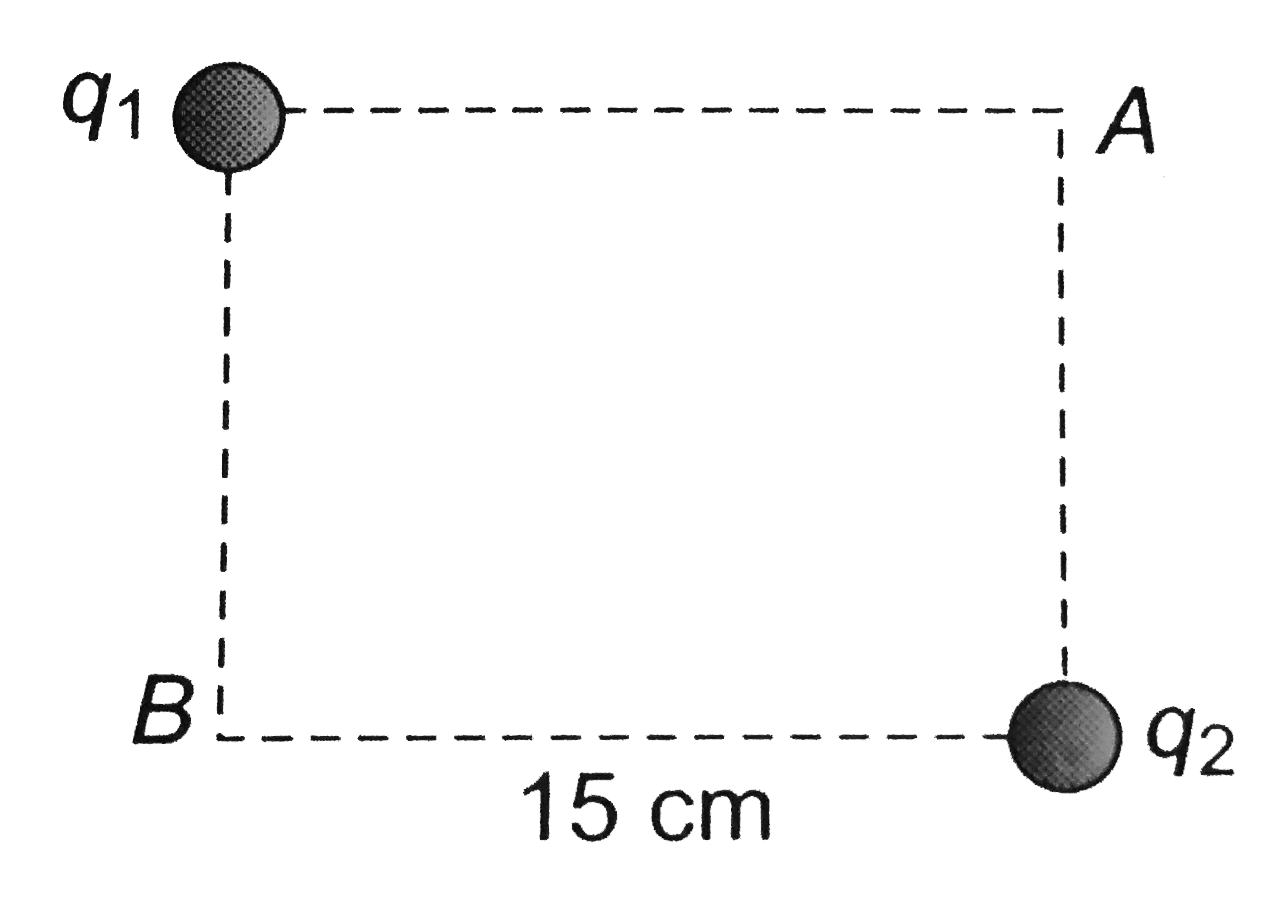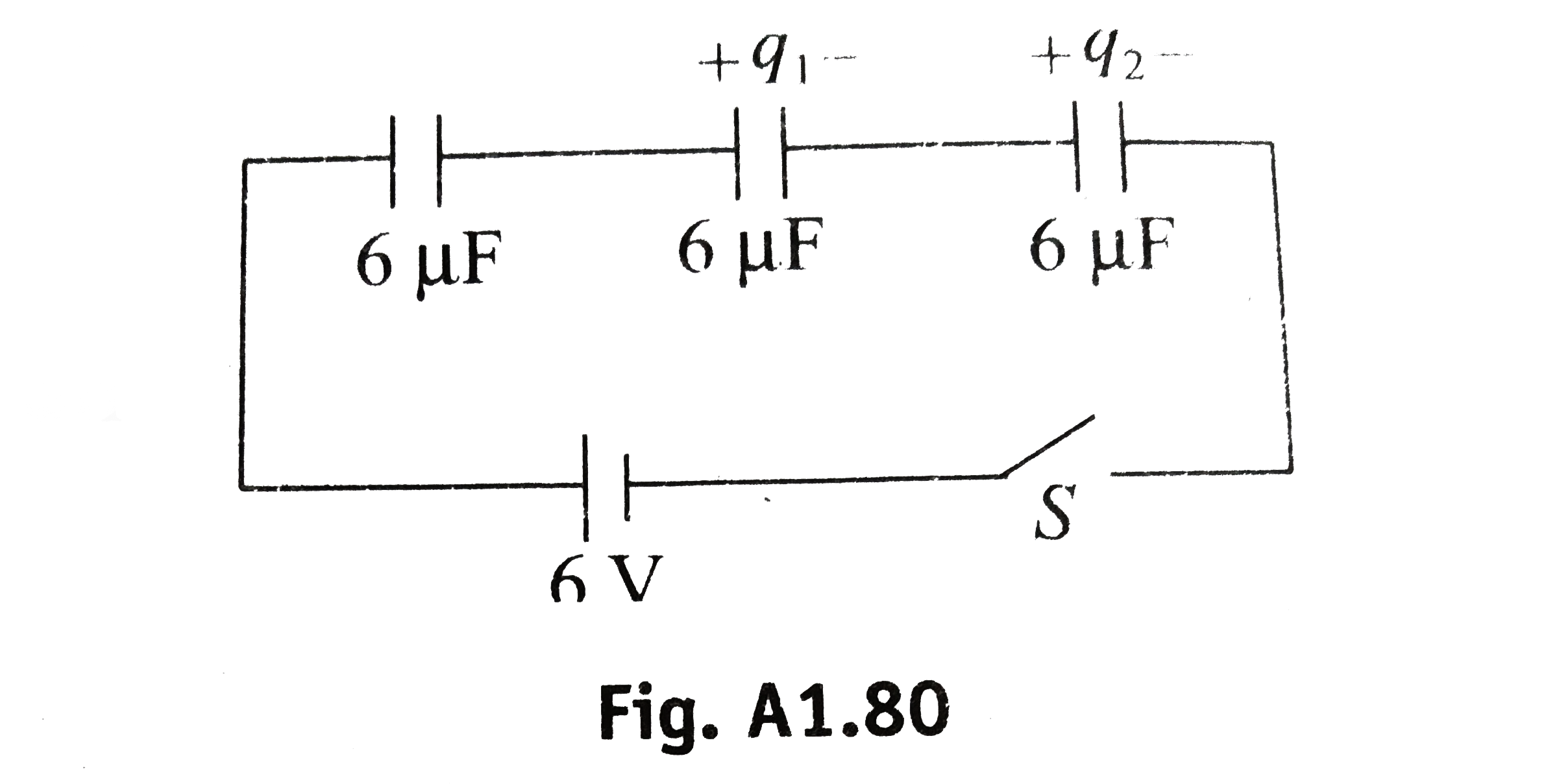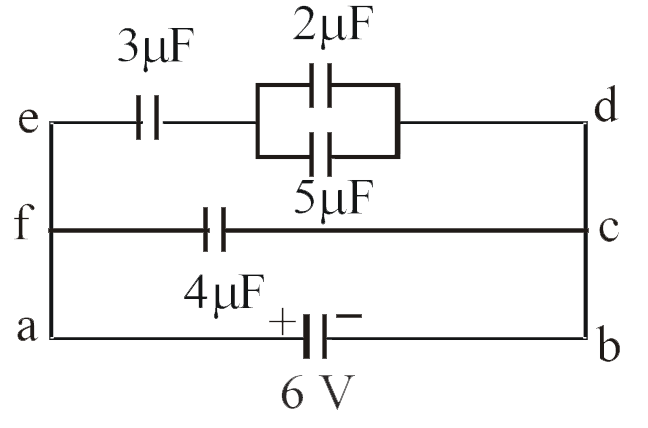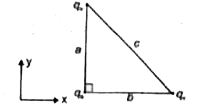In the rectangle shown below, the two corners have charges q1=−5μCandq2=+2.0μC. The work done in moving a charge +3.0μC from B to A is

2.8J
3.5J
4.5J
5.5J
The correct Answer is:A
Step by step video & image solution for In the rectangle shown below, the two corners have charges q_(1)=-5 muC and q_(2) = +2.0 muC. The work done in moving a charge +3.0 muC from B to A is by Physics experts to help you in doubts & scoring excellent marks in Class 12 exams.
Updated on:21/07/2023Topper's Solved these Questions
- ELECTRIC POTENTIALBook:CENGAGE PHYSICS ENGLISHChapter:ELECTRIC POTENTIALExercise:DPP 3.2
Explore 15 Videos
- ELECTRIC POTENTIALBook:CENGAGE PHYSICS ENGLISHChapter:ELECTRIC POTENTIALExercise:DPP 3.3
Explore 20 Videos
- ELECTRIC POTENTIALBook:CENGAGE PHYSICS ENGLISHChapter:ELECTRIC POTENTIALExercise:Integer
Explore 5 Videos
- ELECTRIC FLUX AND GAUSS LAWBook:CENGAGE PHYSICS ENGLISHChapter:ELECTRIC FLUX AND GAUSS LAWExercise:MCQ s
Explore 38 Videos
- ELECTRICAL MEASURING INSTRUMENTSBook:CENGAGE PHYSICS ENGLISHChapter:ELECTRICAL MEASURING INSTRUMENTSExercise:M.C.Q
Explore 2 Videos
Similar Questions
In the rectangle, shown below, the twp corners have charges q1=−5μCandq2=+2.0μC. The work done in moving a charge +3.0μC from B to A is (take 1/4πε0=1010N-m2/C2)

View SolutionIn the rectangle, shown below, the two corners have charges q1=−5μC and q2=+2.0μC. The work done in moving a charge +3.0μC from B→A is (take 1/44πε0=1010N−m2/C2)

View SolutionFind the work done in taking a charge 100μC from C & D.
View SolutionThe left most capacitor is uncharged. The other two capacitors carry charges q1=8μCandq2=10μC . Now switch S is closed. Find the final charge on left most capacitor.

View SolutionThree charges are placed at the vertices of an equilateral triangle of side 10 cm. Assume q1=1μC,q2=−2μCandq3=4μC. Work done in separating the charges to infinity is
View SolutionA dipole of 2μC charges each, consists of the positive charge at the point P (1, -1) and the negative charge is placed at the point Q(-1, 1). The work done in displacing a charge of +1μC from point A(−3,−3) to B (4, 4) is
View SolutionIn the circuit given below, the charge in μC, on the capacitor having 5μF is

View SolutionA charge q1=2.00μC is located at the origin , and a charge q2=−6.00μC is located at (0,3.00)m.
(a) Find the total electric potential due to these charges at the point P hose coordinates are ( 4.00,0) m .
( b) Find the change in potential energy of the system of two charges plus a charge q3=3.00μC as the latter charge moves from infinity to point P .
View SolutionTwo charges q1=3.0μC and q2=−4.0μC initiallly are separated by a distance r0=2.0cm. An external agent moves the charges until they are rf=5.0cm apart. How much work is done by the electric field in moving the charges from r0 to rf ? Is the work positive or negative ?
View SolutionSuppose that three point charges qa,qb and qc are arranged at the vertices of a right -angled triangle as shown . What is the absolute electric potential at the position of the third charge if qa=−6.0μC,qb=+4.0μC,qc=+2.0μC,a=4.0m and b=3.0 m ? Suppose that the third charge which is initially at rest is repelled to infinity by the combined electric field of the other two charges which are held fixed . What is the final final kinetic energy of the third charge ?

View Solution

